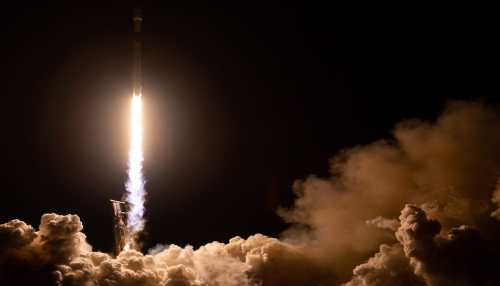- News>
- World
NASA launches first-ever international mission to survey Earth`s water, SpaceX Falcon 9 rocket takes off in California - WATCH

The satellite will measure the height of water in freshwater bodies and the ocean on more than 90 percent of Earth`s surface, reports IANS.
Highlights
- NASA launches first-ever international mission to survey Earth’s water
- The satellite will measure the height of water in the planet’s lakes, rivers, reservoirs, and the ocean
- SpaceX Falcon 9 rocket was launched from Vandenberg Space Force Base in California
NASA has launched the first-ever global satellite mission that will observe nearly all water on Earth's surface, measuring the height of water in the planet’s lakes, rivers, reservoirs, and the ocean. The Surface Water and Ocean Topography (SWOT) spacecraft atop a SpaceX Falcon 9 rocket was launched from Vandenberg Space Force Base in California on Friday. "Warming seas, extreme weather, more severe wildfires -- these are only some of the consequences humanity is facing due to climate change," said NASA Administrator Bill Nelson. "The climate crisis requires an all-hands-on-deck approach, and SWOT is the realisation of a long-standing international partnership that will ultimately better equip communities so that they can face these challenges," Nelson added.
The satellite was built by NASA and the French space agency Centre National d’ Etudes Spatiales (CNES). The SWOT spacecraft also has contributions from the Canadian Space Agency (CSA) and the UK Space Agency. The satellite will measure the height of water in freshwater bodies and the ocean on more than 90 percent of Earth's surface.
Also read: NASA astronauts install new roll-out solar array on Space station: Watch VIRAL video
This information will provide insights into how the ocean influences climate change; how a warming world affects lakes, rivers, and reservoirs; and how communities can better prepare for disasters, such as floods, said the US space agency.
SWOT will cover the entire Earth's surface between 78 degrees south and 78 degrees north latitude at least once every 21 days, sending back about one terabyte of unprocessed data per day.
"We’re eager to see SWOT in action,” said Karen St. Germain, NASA Earth Science Division director. aceThis satellite embodies how we are improving life on Earth through science and technological innovations." SWOT measurements will also help researchers, policymakers, and resource managers better assess and plan for things, including floods and droughts.
By providing information on where the water is -- where it's coming from and where it's going -- researchers can improve flood projections for rivers and monitor drought effects on lakes and reservoirs.
(With inputs from IANS)
